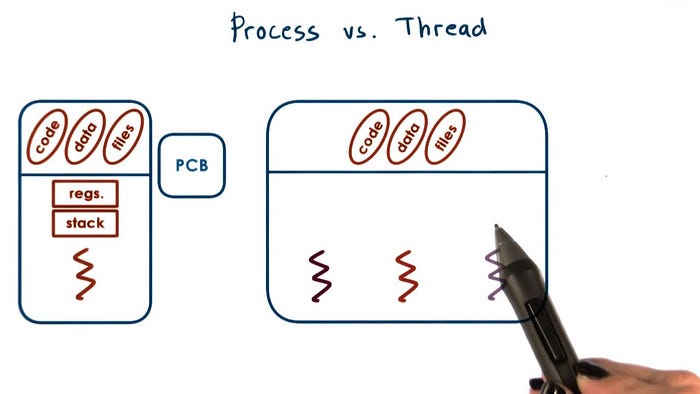Member-only story

When it comes to understanding the underlying workings of a computer, two terms that often come up are “process” and “thread”. These terms are frequently used interchangeably, but they are actually two different concepts.
A process is the basic unit of work in an operating system. It is an instance of a program that is being executed. Each process has its own memory space, environment variables, and system resources such as file handles and network connections. Processes are isolated from one another, which means that they cannot directly access each other’s memory space.
A thread, on the other hand, is a unit of work within a process. It is a light-weight process that runs independently within a process. Threads share the same memory space and system resources as the process that created them. This allows for faster communication and coordination between threads, as they can share data and resources more easily than processes can.
The key difference between processes and threads lies in their level of abstraction. Processes are a higher level of abstraction, providing a complete execution environment. Threads are a lower level of abstraction, providing a means of executing multiple tasks within a process.
One of the main advantages of using threads is their ability to run in parallel, allowing for the efficient use of multiple CPU cores. This is because threads are scheduled by the operating system to run simultaneously on different cores, providing a performance boost for certain types of applications.
Another advantage of threads is that they can be used to improve the responsiveness of an application. For example, an application with a responsive user interface can create a separate thread to handle background tasks such as file I/O or network communication, allowing the main thread to continue processing user input.
In contrast, the primary advantage of using processes is their isolation from one another. This makes processes an ideal choice for executing tasks that are independent of each other, such as running multiple instances of the same program.
Both processes and threads have their own strengths and weaknesses, and the choice between the two often depends on the specific requirements of the application. Understanding the key differences between processes and threads is essential for making informed decisions about the design and implementation of your software.
